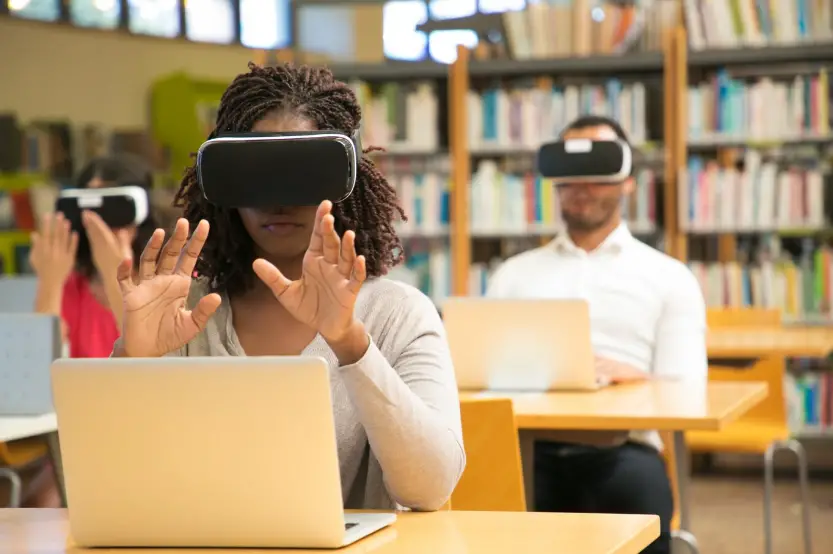The Pros and Cons of Technology in Education

In the ever-evolving landscape of education, technology has become an integral part of the learning experience. From interactive whiteboards to online learning platforms, the educational sector has witnessed a transformative shift. While technology brings numerous benefits, it also introduces challenges that educators, students, and policymakers must grapple with. This article will delve into the pros and cons of technology in education, shedding light on the multifaceted impact it has on the learning process.
Pros of Technology in Education:
Enhanced Accessibility
One of the most transformative aspects of technology in education is its role in enhancing accessibility to learning resources. Online platforms and digital content have shattered traditional geographical barriers, ensuring that educational materials are accessible to a global audience. Students from diverse backgrounds, regardless of their location, now have the opportunity to access the same quality of information, thereby contributing to the democratization of education. This accessibility not only broadens educational horizons but also fosters inclusivity, enabling a more diverse range of learners to participate in the educational process.
Engaging Learning Experience
Technology has ushered in a new era of interactive and immersive learning experiences, fundamentally altering the way students engage with educational content. Virtual simulations, educational games, and multimedia presentations serve as dynamic tools that captivate students’ attention, making the learning process more engaging and enjoyable. This not only enhances comprehension but also caters to different learning styles, accommodating a broader range of students. The integration of these technologies promotes a more student-centric approach, encouraging active participation and fostering a love for learning.
Customization and Personalization
One of technology’s most powerful advantages in education lies in its ability to facilitate personalized learning experiences. Adaptive learning platforms, equipped with sophisticated algorithms, can dynamically adjust the pace and difficulty of content based on an individual student’s progress. This ensures that each learner receives a customized education tailored to their specific needs and learning style. The personalization of learning not only boosts student engagement but also contributes to a more efficient and effective learning process, ultimately maximizing the educational outcomes for each student.
Global Collaboration
Technology serves as a bridge that connects students globally, fostering collaboration beyond geographical boundaries. Online platforms facilitate real-time communication and collaboration, allowing students to work with peers and experts from diverse cultures and locations. This global perspective not only enriches the learning experience by exposing students to different viewpoints but also prepares them for a connected, interdependent world. Collaborative projects and virtual exchanges become feasible, breaking down cultural and geographical barriers and promoting a sense of global citizenship among learners. And in case your team seeks help with professional writing check out: https://writepaperfor.me/pay-someone-to-do-my-homework
Cons of Technology in Education
Digital Divide
Despite the strides made in increasing accessibility, a significant challenge remains in the form of the digital divide. This divide creates disparities in access to technology and the internet, particularly affecting students from economically disadvantaged backgrounds. Lack of access to necessary devices or reliable internet connections exacerbates educational inequalities. Bridging this divide becomes a crucial imperative for ensuring equitable access to educational opportunities and preventing the further marginalization of certain student populations.
Distraction and Over-reliance
The omnipresence of smartphones and computers in educational settings introduces the challenge of potential distractions. Social media, online games, and non-educational content can divert students’ attention, hindering the learning process. Moreover, an over-reliance on technology without a balanced integration of traditional teaching methods may lead to the loss of essential interpersonal and critical thinking skills. Striking a balance between leveraging technology for educational purposes and managing potential distractions is essential for optimizing the learning environment.
Privacy and Security Concerns
The collection of vast amounts of data in educational technology raises valid privacy concerns. Student data must be handled with utmost care to prevent unauthorized access and potential misuse. Educational institutions need to implement robust security measures and ethical guidelines to protect the privacy of both students and educators. Establishing transparent data management practices and ensuring compliance with privacy regulations are essential steps toward creating a secure digital learning environment.
Teacher Training and Resistance
The successful integration of technology into education hinges on well-trained educators who can harness its full potential. However, many teachers may lack the necessary training to effectively utilize technology in the classroom. Resistance to change is also a common challenge, as some educators may feel overwhelmed or reluctant to embrace new tools and methodologies. Addressing this knowledge gap requires comprehensive and ongoing teacher training programs, fostering a culture of continuous learning and adaptation to technological advancements.
Conclusion
As technology continues to shape the educational landscape, the balance between its advantages and challenges remains delicate. Embracing technology in education requires a thoughtful approach that addresses issues such as accessibility, distraction, and privacy. While the benefits of enhanced accessibility, engagement, and customization are clear, mitigating the digital divide, providing adequate teacher training, and safeguarding privacy are essential for a successful integration.
